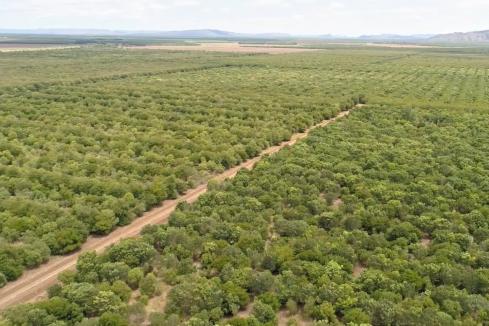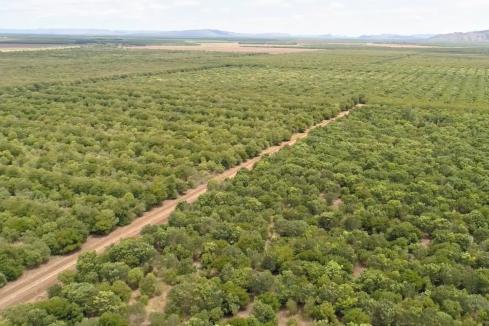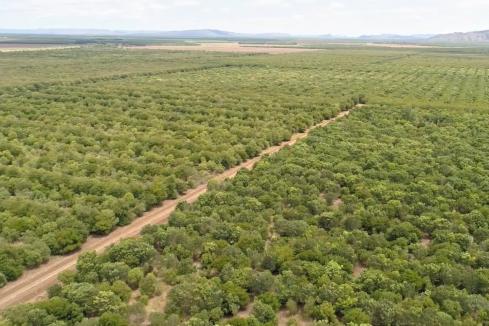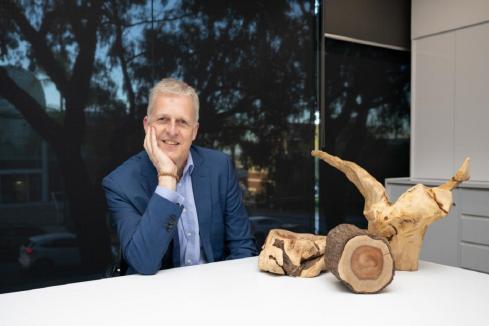The Quintis insolvency could play out very differently from other failed agribusiness investment schemes.


The demise of Quintis has wiped out the value of shares in the ASX-listed company but there likely remains a lot of value in the group’s 16 sandalwood projects.
Preserving value in these projects has become the main focus for investors (growers), who have pumped hundreds of millions of dollars into sandalwood trees.
As growers contemplate their options, many are wary of the motives of the secured noteholders, led by US investment group BlackRock, which now controls Quintis.
The secured noteholders, who loaned about $330 million to Quintis, have appointed three partners of McGrathNicol as receivers; they will now run the company.
This came just days after the company’s directors, led by chairman Dalton Gooding, put it into administration.
Quintis founder and former managing director Frank Wilson summed up the feeling of many investors.
“As a major shareholder I have just seen my equity holding in Quintis flushed down the gurgler by the sheer incompetence of the current board and senior management of Quintis,” Mr Wilson wrote in a letter to growers.
“Having lost a considerable amount of money on our equity in Quintis, I am determined to not allow Quintis management and BlackRock to combine again to flush our plantations down the gurgler as well.”
The wariness of investors will only be fuelled by memories of what happened nearly a decade ago, after a swath of agribusiness investment groups, including Great Southern, Timbercorp and Rewards Group, fell into the hands of receivers.
In many of those cases, the receivers wanted to wind-up the agribusiness schemes, typically forestry, so they could sell the underlying land.
Primary Securities managing director Rob Garton Smith, who has extensive experience in this field, suspects Quintis will be different.
“We believe that in this case, the circumstances may be different,” Mr Garton Smith said.
“Here, we think that the noteholders would want the schemes to continue.”
That’s because Quintis directly holds a substantial proportion of the rights to the trees in every scheme, and most schemes are on land owned by both third parties and Quintis.
Mr Garton Smith said the receivers and noteholders may want Quintis to remain a going concern and in a position to manage the plantations and sell and market the products.
“It follows, and we may be wrong, that the noteholders would want to keep good relations with any new responsible entity (RE) and with the growers in the schemes,” he said.
That’s where Mr Garton Smith sees a commercial opportunity for his business.
He is hoping growers in the 2003 to 2009 sandalwood schemes, and possibly others, will vote to dump Quintis subsidiary Sandalwood Properties and appoint Primary Securities as the RE in its place.
Quintis has previously disclosed that Sandalwood Properties was in breach of its licence conditions and that the Australian Securities and Investments Commission could suspend or cancel its RE licence.
Teague Czislowski, who chairs the recently formed Sandalwood Growers Cooperative, is also angling for change, but from a different perspective.
He said third-party secondary market transactions showed there was significant market value in the unharvested sandalwood schemes.
“Even on the terribly low value recently paid by Quintis to growers (in the 2002 scheme), what other forestry project is worth $250,000 per hectare?” Mr Czislowski said.
The high value of the sandalwood trees relative to the value of the land meant it would be much harder to terminate the Quintis schemes, compared with what happened a decade ago when receivers applied to the courts to wind-up several blue gum schemes.
A second reason was that lease payments were delivering a better return than alternative uses.
Mr Czislowski is encouraging growers to sign up to the co-op, saying this provided their best chance of a good outcome, particularly if McGrathNicol sought to wind-up the sandalwood schemes.
“The big problem (with earlier schemes) was that the growers did not get organised in time and make an application to Court to set aside the efforts to remove the growers from the land,” he said.
“The growers and the Sandalwood Growers Co-op will not allow this to happen.”
The ability of growers to band together and replace an RE will be tested this week, when growers in the 2002 scheme hold a meeting (January 30).
At least 50 per cent of eligible votes must support a resolution to replace the RE.
Mr Czislowski told Business News he has been working with Sydney-based Huntley Group as an alternative RE.
He believes a change is needed because of the conflict of interest that currently arises, with Quintis as the manager of the schemes and effectively in charge of the RE that is selling its product.
“The (receivers) should soon find that working with the growers and the co-op will give them the best return on the assets they are in control of,” Mr Czislowski said.
Mr Garton Smith said a grower-led rescue of the Quintis schemes would need additional financial support, but expected the pay-off would be attractive.
He gave the example of the 1995 to 1999 Willmott Forests pine schemes.
Growers contributed about $4 million to Primary Securities to cover costs but are expected to receive about $16 million in returns.
Primary has also been involved in the rescue of Great Southern vineyard schemes, Gunns blue gum schemes and the Templegate pine schemes.
Apart from the question of appointing a new RE is whether Quintis continues to manage its sandalwood schemes.
Mr Wilson, who is a director of the co-op, is promoting its capacity to provide a superior service to Quintis.
He said he had worked closely with other major growers over the past six months to form what he believed was a commercially superior alternative, offering quality forestry management at a lower cost and superior sales and marketing services.
Business News sought comment from the receivers, but they had not made any statements by the time the paper went to press.
















